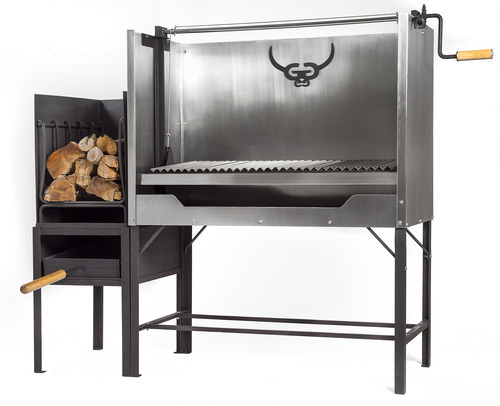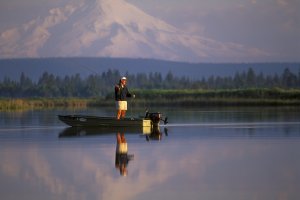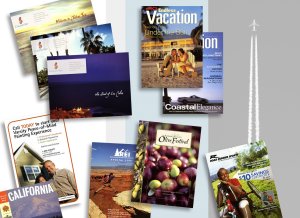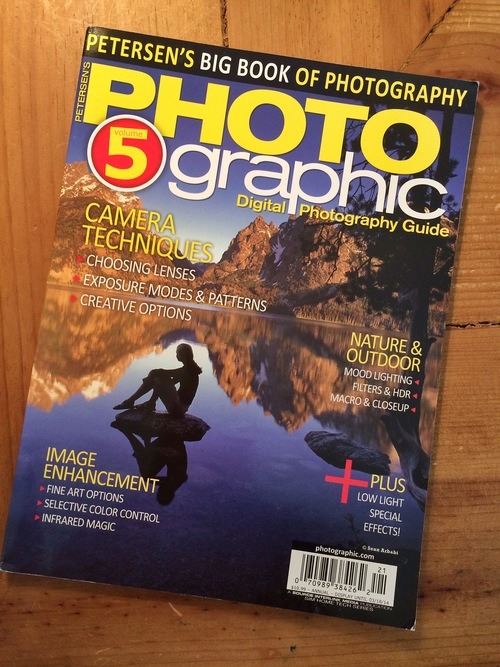Category Archives: business of photography
Gaucho García – The Art of Asado

Check ’em out- the BBQ is amazing, the design is slick, the fundraising project looks cool, and the people are passionate and dedicated to the project: http://gauchogarcia.com/

All images © Sean Arbabi | seanarbabi.com (all rights reserved worldwide)
InstaGRAB vs Photographers. Please, by all means, steal my photos.
I really don’t get this method of thinking by photographers sometimes. As we continue to lose control of major sections of our industry, so many still haggle over the ridiculous minutia that really doesn’t make much of a difference.
“I really want my byline to be a larger font.”
“Should a magazine send me one or two copies of the issue where my photos appeared.”
What? Who cares about this stuff – we all are making less and less each year.
All while big companies or corporations make more profits off our photographs by presenting lousy contracts (that most photographers don’t read or alter), offering low or no pay, and creating businesses where they trick photographers into believing exposure will help you make more money. Bullshit. It’s like throwing a penny down on the ground and having all these photographers run to pick it up while they reach into your back pockets and steal your cash-filled wallets. And as far as exposure goes, I say exposure my ass. My business has never flourished from my images being used for free.
The bigger question is, why would any photographer use Instagram after they changed their terms to use your images. Instagram’s terms still state “you hereby grant to Instagram a non-exclusive, fully paid and royalty-free, transferable, sub-licensable, worldwide license to use the Content that you post“.
That’s bad for photographers and come to think of it, bad for everyone….except Instagram.
Btw, I call them Instagrab now- seems to be a perfect name for who they really are.
This kind of rights-grabbing terms on social sites is unacceptable, and there needs to be stronger backlash against it by photographers, artists, or any creative person who’s livelihood deals with visual media- stills or video. Facebook tried to follow this method earlier this year (no wonder- they own Instagram and got away with it once already) and even Google+ is trying to implement something similar.
By the way, I used to have an Instagram account, and I enjoyed it. It was fun to create images and share them with others- silly photos, creative ones, others to promote my business, and so on. But the second they stuck with their new terms, I dumped my account, and closed my family member accounts too. Today, there’s news on Instagram adding video functionality or ads but this is besides the point. I’m baffled why so many would still be on Instagram when their terms state they can use your images for anything- also confused why big companies (i.e. National Geographic, NY Yankees, 49ers), sports athletes, or celebs are on Instagrab since they can do this to them as well.
 |
| Training Timber – © Sean Arbabi | seanarbabi.com (all rights reserved worldwide) |
Come on people, grow a backbone and dump any account where the company tries to use your work to make millions while paying you nothing. Complain to these sites and spread the word. Social sites can make their money from ads. I could care less about that since it seems like a fair exchange for a free way to market your art. Just as long as they don’t try to take my images without my permission and use them for these ads….or for that matter, any other lousy rights-grabbing idea they have to please their shareholders or investors.
See how some in the UK fought back: http://www.bjp-online.com/british-journal-of-photography/news/2290837/photography-organisations-rally-against-instagrams-terms-of-use
More on how stripping metadata by social sites can lead to abuse of a photographer’s images (and how some companies are trying to make that okay): http://eposure.com/blog/the-instagram-act-new-copyright-info-for-photographers?goback=.gde_2093733_member_248489690
Read two of Daniel J. Cox’s blog posts on Instagram: http://www.naturalexposures.com/uk-gov-passes-instagram-act-all-your-pics-belong-to-everyone-now/
and
http://www.naturalexposures.com/instagrams-new-policy-to-steal-your-photos-returns/
Once more article about Instagram from ASMP (Amercian Society of Media Photographers): http://asmp.org/articles/instagram-papers.html#.UnVhGZRAThA
Building my own career
I had a professional issue a few months back that took me back some. Sure it was upsetting but didn’t shake me – I know who I am and what my intentions are as a person and as a pro photographer. I don’t live in the past, as although you remind yourself not to take things personally, how can you not- especially when you have a passion in what you do, and work tirelessly to make it happen.
Photographs aren’t free
 I recently received an email from someone claiming to be a writer for a how-to website. This person stated they wrote articles for the search site and wanted to use one of my images for their article (originally used from one of my Via magazine assignments).
I recently received an email from someone claiming to be a writer for a how-to website. This person stated they wrote articles for the search site and wanted to use one of my images for their article (originally used from one of my Via magazine assignments).
Getting back to the request, after doing a little research on my own, I come to find out this person was not a writer for the website, nor employee as a writer anywhere else. Instead the site relies on people for their content – it’s like saying you’re a writer for Wikipedia. And not to bash this person since most people aren’t aware of copyright laws, or the licensing fees for a photograph, or the proper way to go about obtaining images – shoot, I’ve had some editors and clients in the past who didn’t necessarily follow the proper way being in the business of licensing images – but pleading ignorance doesn’t necessarily get you off scot-free either.

Moral of the story- your photos are exactly that- yours. If you are a professional photographer with your own business, they are not just sitting in your files or computer, they are part of your inventory. I can’t just go and take something off of the shelf at Target, walk out with it, and claim “it was just sitting on your shelf”. A lot of money, time, effort, experience, knowledge, and equipment goes into all of the images I produce- as with any business that has a product to sell. Control your photos – do your homework – purchase pricing guides and/or software like Fotoquote or Jim Pickerell’s stock guide, and prepare yourself for the day when a client wants to buy one of your images- or one uses an image without asking for permission. And if someone tried to abuse your copyright, find a lawyer.
Photographs aren’t free
 I recently received an email from someone claiming to be a writer for a how-to website. This person stated they wrote articles for the search site and wanted to use one of my images for their article (originally used from one of my Via magazine assignments).
I recently received an email from someone claiming to be a writer for a how-to website. This person stated they wrote articles for the search site and wanted to use one of my images for their article (originally used from one of my Via magazine assignments).
Getting back to the request, after doing a little research on my own, I come to find out this person was not a writer for the website, nor employee as a writer anywhere else. Instead the site relies on people for their content – it’s like saying you’re a writer for Wikipedia. And not to bash this person since most people aren’t aware of copyright laws, or the licensing fees for a photograph, or the proper way to go about obtaining images – shoot, I’ve had some editors and clients in the past who didn’t necessarily follow the proper way being in the business of licensing images – but pleading ignorance doesn’t necessarily get you off scot-free either.

Moral of the story- your photos are exactly that- yours. If you are a professional photographer with your own business, they are not just sitting in your files or computer, they are part of your inventory. I can’t just go and take something off of the shelf at Target, walk out with it, and claim “it was just sitting on your shelf”. A lot of money, time, effort, experience, knowledge, and equipment goes into all of the images I produce- as with any business that has a product to sell. Control your photos – do your homework – purchase pricing guides and/or software like Fotoquote or Jim Pickerell’s stock guide, and prepare yourself for the day when a client wants to buy one of your images- or one uses an image without asking for permission. And if someone tried to abuse your copyright, find a lawyer.
My Photo of the Month

Taking a break from photography
 As I was on a run this evening listening to John Mayer’s “Into Your Atmosphere”, I thought I’d write to all of you to talk a bit about taking a break from photography. This may mean a few days to some, it may mean a few months to others- it all depends on your personality and what’s going on in your life. Sometimes this simple act can work as a catalyst helping you push forward into projects you’ve been holding off on, or help you create new images you might not have thought of in the past.
As I was on a run this evening listening to John Mayer’s “Into Your Atmosphere”, I thought I’d write to all of you to talk a bit about taking a break from photography. This may mean a few days to some, it may mean a few months to others- it all depends on your personality and what’s going on in your life. Sometimes this simple act can work as a catalyst helping you push forward into projects you’ve been holding off on, or help you create new images you might not have thought of in the past.


 After a few year of shooting less (finding bigger clients, more commercial jobs, and diversifying my business some to maintain the level of income I was earning) my excitement for photography came back 100%. I never stopped shooting, but I definitely cut back on the frequency. I’ve never been one to take a camera everywhere I go, and that too I feel has helped me stay fresh in my outlook of the art, carrying that jubilation of capturing a great shot whenever I do so.
After a few year of shooting less (finding bigger clients, more commercial jobs, and diversifying my business some to maintain the level of income I was earning) my excitement for photography came back 100%. I never stopped shooting, but I definitely cut back on the frequency. I’ve never been one to take a camera everywhere I go, and that too I feel has helped me stay fresh in my outlook of the art, carrying that jubilation of capturing a great shot whenever I do so.

How to Survive the Credit Crunch
 This economic year is affecting everyone, not only in the U.S. and U.K., but as well around the globe. Budgets are tighter for companies small and large, resulting in less advertising, affecting ad agencies and magazines – this trickles down to photographers through fewer assignments, smaller stock sales, and less work. As for the public market, individuals are just as concerned and have less disposable income, resulting in fewer purchases of books, fine art prints, lower workshop numbers, as well as tighter budgets for wedding and family portraits.
This economic year is affecting everyone, not only in the U.S. and U.K., but as well around the globe. Budgets are tighter for companies small and large, resulting in less advertising, affecting ad agencies and magazines – this trickles down to photographers through fewer assignments, smaller stock sales, and less work. As for the public market, individuals are just as concerned and have less disposable income, resulting in fewer purchases of books, fine art prints, lower workshop numbers, as well as tighter budgets for wedding and family portraits.



4) Cut your overhead: Whether you have to rent a smaller office space or studio, or simply not purchase that new laptop or 35mm dSLR you’ve wanted, one way most companies survive the tough times is by cutting costs. It’s hard to do, but sometimes you have to rent out your studio, sell some gear you rarely use, or cut out services you don’t need. Less overhead means less pressure to make ends meet.

5) School yourself: Brush up on all the new software you may have in your computer – whether being Photoshop CS4, Lightroom, Aperture, or even Excel and Word hone your skills to tighten your workflow. A few years ago when I had a slow month, I transferred all my presentations from Powerpoint to Keynote, learned the application well, and when the next workshop date arrived, I was ready with a solid lecture.

6) Diversify: Diversifying your business is important in general, but critical during these times. When I started my business, I landed a stock agency and a job capturing production photography three days a week in a studio. As my business grew, I added editorial assignments, then workshops, more ad and corporate work, and slowly expanded my photo business. By putting “20 eggs in the basket”, and hoping a few came through, I was able to always have a check coming from somewhere.
 7) Work on personal projects. Personal projects can not only be rewarding, but often bring new assignments – all the while allowing you to shoot exactly what you are most interested in. I’m currently working on two new projects – a book I hope to publish, and another a studio project capturing a subject I’ve been interested in for years- both of which I can do from my home or office.
7) Work on personal projects. Personal projects can not only be rewarding, but often bring new assignments – all the while allowing you to shoot exactly what you are most interested in. I’m currently working on two new projects – a book I hope to publish, and another a studio project capturing a subject I’ve been interested in for years- both of which I can do from my home or office.
8) Delve into the realm of social sites and email marketing. When you market your photography through emails, costs can be drastically lower than snail mail, and you can hit thousands of clients on a tight budget. Just remember though, respect client requested to be removed from lists, and be considerate of no-email requests.
New media sources such Facebook, Twitter, Linkedin, Word Press, MySpace, RedRoom, as well as blogging can also expand your web coverage and bring new business. These websites are the rage with many photographers jumping in, but if you haven’t, consider these social sites as potential marketing tools. After my first book came out, I joined a site where people can connect with authors and over a period of a few months, had roughly 2000 people visit my pages. By marketing my book through these sites, I believe I was able to keep it in the top 50 photo books for the first six months of 2009, an incredibly difficult year where sales are down- my publisher was very happy with the numbers, which hopefully will lead to more distribution and sales, as well as future book projects.
Just remember, you want to be unique, a bit different from the other million photographers doing the same thing – so pick an agenda or a style and run with it. Blogging about random thoughts not related to photography probably won’t get you new work. I personally have a page on Twitter, Facebook, Flickr, MySpace, and YouTube, and my blog appears on all the top blog sites – which has lead to thousands of hits for my business.
Sure it takes some work to keep these up-to-date, but it pays off in both tangible and intangible ways. This year I sold two gallery prints, made a stock sale, sold a number of copies my exposure book, had a few people sign up for my workshops, did a consultation for a photographer, and landed a big corporate shoot – all through my presence on these sites.
9) Create a dream client list: One way to market yourself is to go after a certain type of client you are most interested in, and one that fits the type of work you like to capture. Whether you obtain your list through a mailing list company (Ad Base, Fresh Lists, etc), or simply locate the information online, this exercise can not only help you focus on the type of imagery you want to market, and the type of work you want to do, but could also help you land that dream client you always wanted. I always said, someone has to shoot for the National Geographic– why can’t it be me? By focusing on that top 10 list of clients, you pay more attention to them, may get to know the principals, and since it often about who you know instead of what you can do, you may just land that client.

10) Brainstorm: Often during hard times, people come up with new ways to promote or sell a product or service- this usually occurs simply through brainstorming for better ideas. I’ve been a photographer more than half my life, but it doesn’t mean I’ve thought of everything- in fact quite the opposite. So remember, you may come up with an idea that saves your business – one that’s not even on this list.
Good luck and happy shooting!
How to Survive the Credit Crunch
 This economic year is affecting everyone, not only in the U.S. and U.K., but as well around the globe. Budgets are tighter for companies small and large, resulting in less advertising, affecting ad agencies and magazines – this trickles down to photographers through fewer assignments, smaller stock sales, and less work. As for the public market, individuals are just as concerned and have less disposable income, resulting in fewer purchases of books, fine art prints, lower workshop numbers, as well as tighter budgets for wedding and family portraits.
This economic year is affecting everyone, not only in the U.S. and U.K., but as well around the globe. Budgets are tighter for companies small and large, resulting in less advertising, affecting ad agencies and magazines – this trickles down to photographers through fewer assignments, smaller stock sales, and less work. As for the public market, individuals are just as concerned and have less disposable income, resulting in fewer purchases of books, fine art prints, lower workshop numbers, as well as tighter budgets for wedding and family portraits.



4) Cut your overhead: Whether you have to rent a smaller office space or studio, or simply not purchase that new laptop or 35mm dSLR you’ve wanted, one way most companies survive the tough times is by cutting costs. It’s hard to do, but sometimes you have to rent out your studio, sell some gear you rarely use, or cut out services you don’t need. Less overhead means less pressure to make ends meet.

5) School yourself: Brush up on all the new software you may have in your computer – whether being Photoshop CS4, Lightroom, Aperture, or even Excel and Word hone your skills to tighten your workflow. A few years ago when I had a slow month, I transferred all my presentations from Powerpoint to Keynote, learned the application well, and when the next workshop date arrived, I was ready with a solid lecture.

6) Diversify: Diversifying your business is important in general, but critical during these times. When I started my business, I landed a stock agency and a job capturing production photography three days a week in a studio. As my business grew, I added editorial assignments, then workshops, more ad and corporate work, and slowly expanded my photo business. By putting “20 eggs in the basket”, and hoping a few came through, I was able to always have a check coming from somewhere.
 7) Work on personal projects. Personal projects can not only be rewarding, but often bring new assignments – all the while allowing you to shoot exactly what you are most interested in. I’m currently working on two new projects – a book I hope to publish, and another a studio project capturing a subject I’ve been interested in for years- both of which I can do from my home or office.
7) Work on personal projects. Personal projects can not only be rewarding, but often bring new assignments – all the while allowing you to shoot exactly what you are most interested in. I’m currently working on two new projects – a book I hope to publish, and another a studio project capturing a subject I’ve been interested in for years- both of which I can do from my home or office.
8) Delve into the realm of social sites and email marketing. When you market your photography through emails, costs can be drastically lower than snail mail, and you can hit thousands of clients on a tight budget. Just remember though, respect client requested to be removed from lists, and be considerate of no-email requests.
New media sources such Facebook, Twitter, Linkedin, Word Press, MySpace, RedRoom, as well as blogging can also expand your web coverage and bring new business. These websites are the rage with many photographers jumping in, but if you haven’t, consider these social sites as potential marketing tools. After my first book came out, I joined a site where people can connect with authors and over a period of a few months, had roughly 2000 people visit my pages. By marketing my book through these sites, I believe I was able to keep it in the top 50 photo books for the first six months of 2009, an incredibly difficult year where sales are down- my publisher was very happy with the numbers, which hopefully will lead to more distribution and sales, as well as future book projects.
Just remember, you want to be unique, a bit different from the other million photographers doing the same thing – so pick an agenda or a style and run with it. Blogging about random thoughts not related to photography probably won’t get you new work. I personally have a page on Twitter, Facebook, Flickr, MySpace, and YouTube, and my blog appears on all the top blog sites – which has lead to thousands of hits for my business.
Sure it takes some work to keep these up-to-date, but it pays off in both tangible and intangible ways. This year I sold two gallery prints, made a stock sale, sold a number of copies my exposure book, had a few people sign up for my workshops, did a consultation for a photographer, and landed a big corporate shoot – all through my presence on these sites.
9) Create a dream client list: One way to market yourself is to go after a certain type of client you are most interested in, and one that fits the type of work you like to capture. Whether you obtain your list through a mailing list company (Ad Base, Fresh Lists, etc), or simply locate the information online, this exercise can not only help you focus on the type of imagery you want to market, and the type of work you want to do, but could also help you land that dream client you always wanted. I always said, someone has to shoot for the National Geographic– why can’t it be me? By focusing on that top 10 list of clients, you pay more attention to them, may get to know the principals, and since it often about who you know instead of what you can do, you may just land that client.

10) Brainstorm: Often during hard times, people come up with new ways to promote or sell a product or service- this usually occurs simply through brainstorming for better ideas. I’ve been a photographer more than half my life, but it doesn’t mean I’ve thought of everything- in fact quite the opposite. So remember, you may come up with an idea that saves your business – one that’s not even on this list.
Good luck and happy shooting!



